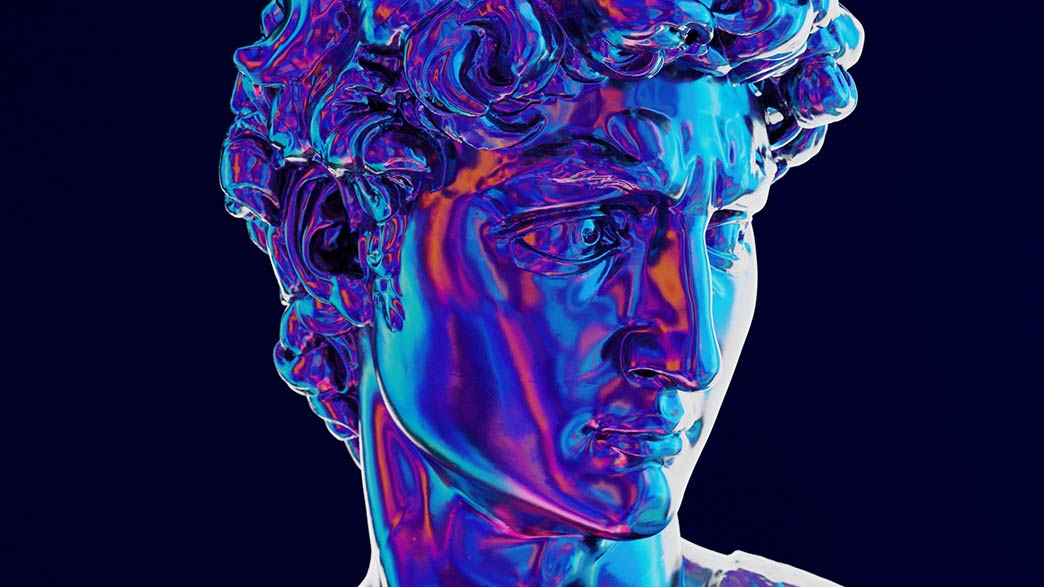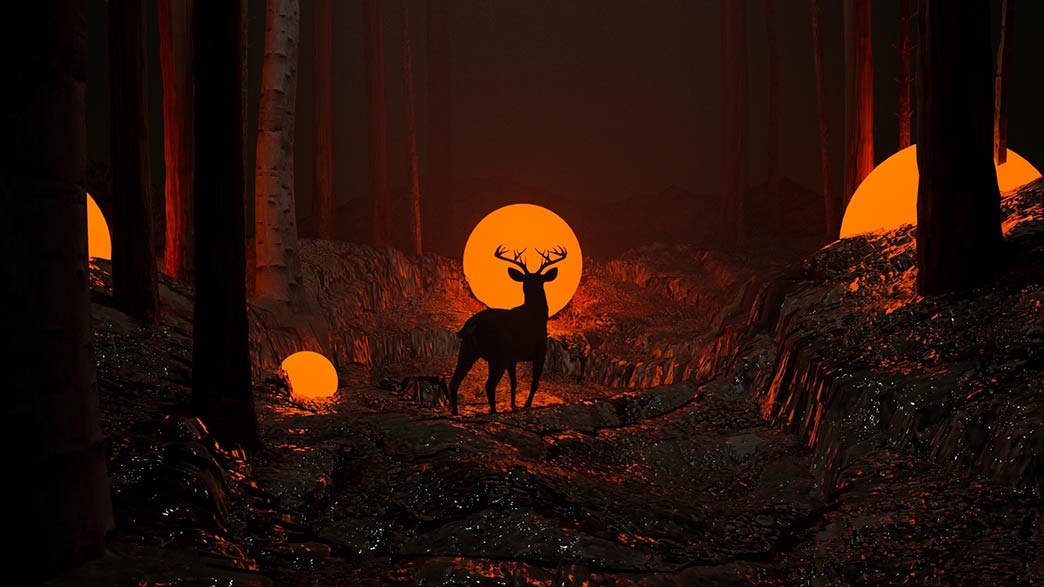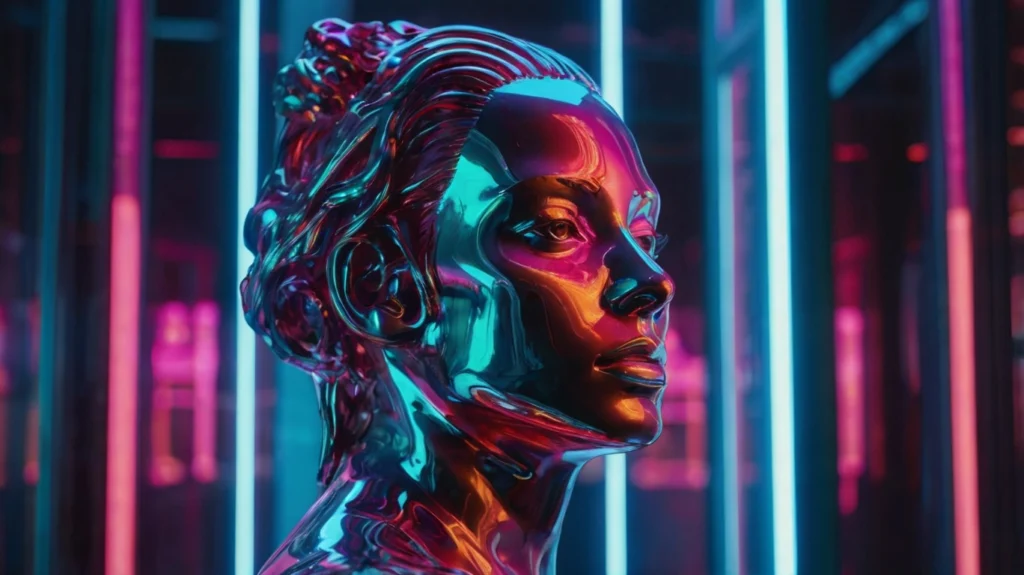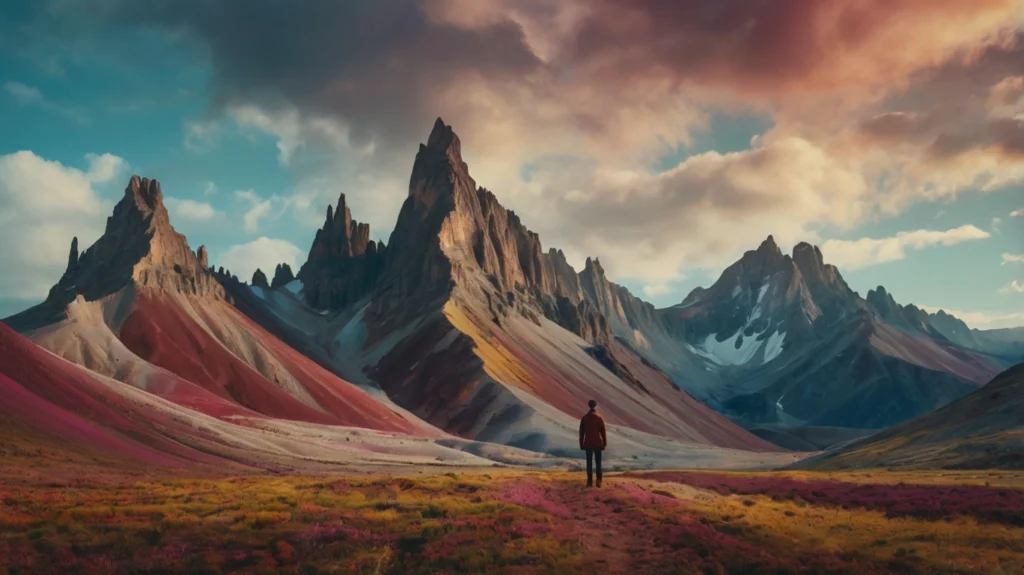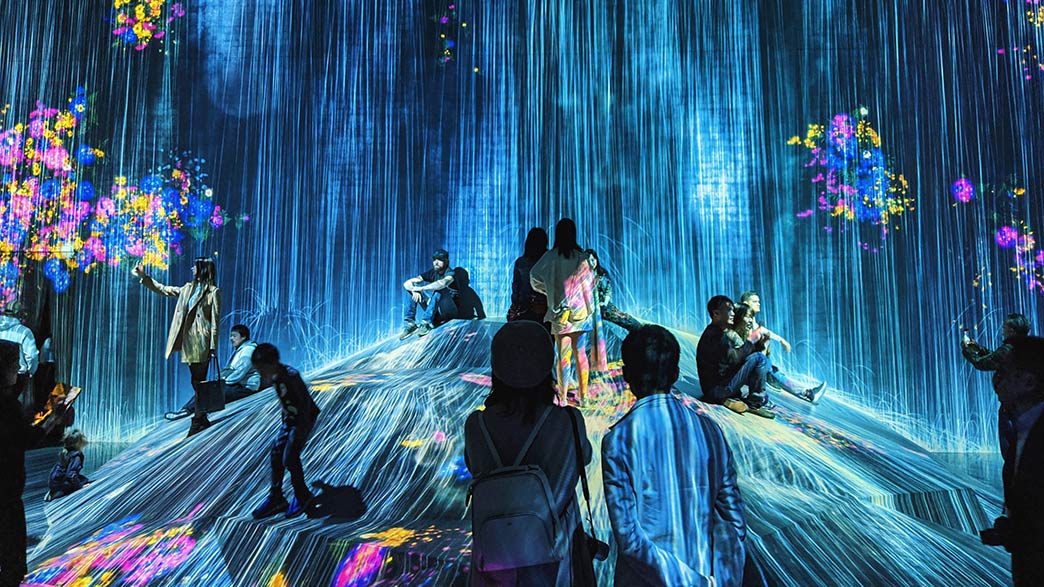- The origins of visual art
- The development of digital art technologies
- What is digital art?
- A different kind of creativity
- Digital video vs. film production
- The role of social media in disseminating image-enhanced ads
- Can digital art be kept private and secure?
- What all this means for the digital artist
- Love of art
From the very first cave paintings to the stunning digital masterpieces we see on screens today, visual art has always adapted to fit the times. The rise of digital art has sparked a whole new world of creativity, introducing digital art as a groundbreaking medium. But what exactly does that mean?
In simple terms, digital art is art created or enhanced using digital tools and platforms. It’s a space where artists can freely experiment, breaking boundaries that traditional mediums might impose. In this article, we’ll take a closer look at the roots of visual art and explore how technology has reshaped and expanded the way we create and experience it today.
The origins of visual art
Humans have been creating visual art since the dawn of our species, beginning with powerful depictions of game animals found in caves ranging from France to Indonesia. Art is interpretive, reflecting an inner vision of the creator intended to resonate with the viewer’s senses, emotions, and intellect. This is partly why there are so many art styles. Good art always inspires. When used in marketing, striking imagery can enhance brand identity and motivate people to make purchases.
Visual art is always evolving. For example, there was a time when oil easel painting was a new, transformational medium. In the coming years, we’ll be unleashing the artistic potential of Virtual Reality.
The development of digital art technologies
Digital art slowly emerged in the late 1980s with the introduction of personal computers. Thirty years later we have a screen-dominated world with the average person spending ten hours a day on digital devices.
At the same time, there’s been a radical decline in the cost of digital art software with the exponential growth of chip power and bandwidth. This has made creating digital art affordable for artists and other creative individuals wanting to explore this medium’s potential.
Calcomp plotter computer output with liquid inks by Judson Rosebush, 1978.
What is digital art?
Digital art gradually took off in the late 1980s, right around the time personal computers started to become a household staple. In essence, digital art refers to any kind of artistic work that involves digital technology at some stage of the creative process. This could be anything from digital sketches and paintings to 3D models and edited photos.
The phrase “digital art” itself dates back to the early 1980s when a group of computer engineers created AARON, a robot that could draw, sparking a new era in the art world. –We find digital art in advertising (websites, logos, brochures; roadside billboards); illustrations (books, comics, and websites); 3D models (movies, animations and video games); and, digital photo artwork (advertisements and posters).
Digital technology and artistic expression are now inextricably intertwined. This exciting integration of art, computers, and design has been made possible by a brilliant synergy between art, math, science, and technology. The main challenge for digital artists and digital designers, especially vs traditional art, is to utilize digital tools to create memorable images that genuinely touch the viewer’s feelings and intrigue their intellect.
Most online images have been aesthetically enhanced one way or another. Many online images were originally created by an artist working in a different medium but are now widely disseminated online. Original online imagery, by contrast, is generated by computer graphics software that uses a virtual canvas and a ‘painting box’ of brushes, colors, and other tools. Many of these instruments only exist in the digital realm, giving computer-generated artwork a potential multi-layered complexity that is relatively easy to achieve with experience.
Digital art spans a wide variety of styles. There’s digital painting, covering everything from concept art for video games to comic book illustrations and stunning book covers. There’s also 3D modeling, where artists use software like Maya, Blender, or ZBrush to create detailed characters and immersive environments. Digital art can be made directly on a computer or tablet, which gives artists more flexibility than ever before.
Bottom line: there are art forms created with digital tech tools (e.g., computer-generated images and video) – while others are enhanced by or made more accessible with computer technology (e.g., new, expanded distribution media for music, e-books, and performing arts).
Advantages of digital art
- Efficiency and cost-effectiveness – An artist or illustrator skilled at using digital tools can quickly create digital art with modest to no investment in time or money.
- Versatility – It can be computer-generated, scanned and altered, or drawn using a tablet and a mouse. Video edits are instantaneous and reversible.
- Permanence – It can remain indefinitely in a computer file format, so cannot be degraded by the environment.
- Perfect replication – It precisely replicates the original work. Copies and the original are identical.
- Strong impact for minimal cost -For a minimal investment, well-crafted digital images can create a strong impression on the viewer and improve website engagement. They can, for example, serve as a call to action (CTA) in advertising.
- Enhances communication – Digital art is indispensable to attracting online viewers. It enhances communication and viewer comprehension.
- Expands time for the creative input – Digital tools can be quickly and easily applied, giving the artist more time to explore creative options.
While the following professions often overlap, each has a distinctive baseline function.
- Digital designers use creativity and computer skills to design visuals for electronic technology platforms. This includes website design, computer-game graphics and special effects for movies They typically work in the entertainment, education, and advertising/marketing industries.
- A digital artist is adept at using digital tools in producing original art. Their marketing and distribution are entirely separate functions, often delegated to external vendors.
- A graphic designer conceives and integrates the different elements of digital communication, including typography, graphics, imagery, and sound.
- A professional digital photographer uses highly specialized equipment, e.g., single-lens reflex cameras, to capture images for websites and other media. Images are carefully edited before being transmitted to customers. –While most of us take many digital photos to post on social media platforms like Instagram, few amateur pictures have the correct lighting or ideal resolution/compression, etc., to meet commercial standards.
Take Action
Learn more about our digital agency and options available to you, or contact our specialists to discuss how we can realize your vision.
A different kind of creativity
Art is considered digital when created by software on a computer platform. The result may be indistinguishable from non-digital paintings, but the process is entirely different, with distinctive challenges and rewards. Choosing the tools best adapted to creating a piece of digital art requires expertise and ingenuity.
Many artists are intrigued by the fact that the final version of digital artwork can be hard to predict when the process includes multiple software applications. Variations from the original conception can range from awesome to terrible. Fortunately, the digital creation process can be reversed, step-by-step, if the product doesn’t meet expectations.
Digital video vs. film production
Digital video is gaining ground over standard film production because it allows better workflow, is cheaper, and is more easily reproduced. Additionally, video can be reversed to alter images, sound, color, and integrate with special effects (e.g., CGI–computer-generated imagery). This flexibility even enables creators to experiment with subliminal perception, subtly influencing viewers’ emotions and reactions without them being fully aware.
Adding to this complexity, interactive art is becoming increasingly interactive, allowing the user various degrees of control over final images. For example, standard Windows software (as well as free drawing apps) makes it easy to crop images, adjust their color, and fine-tune their brightness/contrast. Much more sophisticated image-generating software includes paid options like Adobe Photoshop and Adobe Illustrator. Free options include Autodesk Sketchbook, MyPaint, Krita, and Misschief.
People enjoy interactive arts experiences. It’s only a matter of time before interactivity will expand to other mediums, including film. For example, many expect that in the future we’ll be able to choose among three or four optional movie endings.
The role of social media
in disseminating image-enhanced ads
Not long ago, advertising imagery was consistent across a company’s demographic targets. In recent years, increasingly sophisticated algorithms have succeeded in deriving subgroup specific information from big data. This means that both the written content and imagery we see on social media are tailored—to a significant degree–to match our demographic and psychographic profiles. This is a welcome development because niche marketing results in higher conversion rates than mass marketing.
This advantage also applies to digital artists who need to target audiences that are more receptive to their brand of art.
Social media have an impact on the arts as follows –
- Social media capture audiences for video performances, match art to people’s preferences and facilitate collaboration in creating new art.
- Digital art production feeds directly into the internet, so traditional gatekeepers (e.g., publishers, recording companies, video rental stores) no longer monopolize their respective markets. Anyone with access to the internet can upload content. Every sixty seconds more than eight hours of video are uploaded to YouTube. No one could ever consume the more than a small fraction of online content now available. The result is a democratized, fragmented flood of available information/creations—with recognized artists competing with amateurs, who, if gifted enough, can themselves rise to celebrity status.
Can digital art be kept private and secure?
Many argue that everything on the internet should be free and accessible. Digital artists who need to earn a living from their creations don’t agree. Unfortunately, it’s difficult to protect copyrighted work. Even systems designed to be secure by design can be vulnerable to hacking, meaning that any digital product accessible on the internet—whether it’s films, music, or TV programs—can be at risk of theft. Many viewers, knowingly or not, are complicit in downloading or sharing stolen content.
Individuals often download internet art without crediting the artist, even claiming the work as their own. Often, ‘violators’ don’t even know they have taken copyrighted creations.
Lack of security is impairing the digital art market. For minimal protection from theft, a digital artist needs to leave watermarks, signatures, and copyright information on their art.
Digital art challenges
Persuading people to pay for online art will necessitate guarantees of rare or exclusive content, uniform quality, and unquestioned legitimacy. Some sources report that certificates of authenticity have encouraged some international collectors to make purchases.
What all this means for the digital artist
Besides securing their intellectual property, digital artists are concerned that—
- Their freedom of expression may be threatened if they express unpopular opinions and come to be viewed by the government as security risks.
- Others are concerned that large corporations are becoming new gatekeepers. For example, Apple limits the types of material that it allows on iTunes.
They hope digital art gains acceptance and eventually becomes accessible using platforms modeled after music venues like Spotify and iTunes. Finally, digital arts will inevitably advance and improve in the years to come, creating stronger demand.
Love of art
The hearts of those working for OWDT, a web design company, are dripping with art. We live art. We breath it. We put it in our cereal. Nothing leaves our doors without being reviewed by our art directors. From web design to SEO services, let our team work its artistic magic on your company’s products and services.
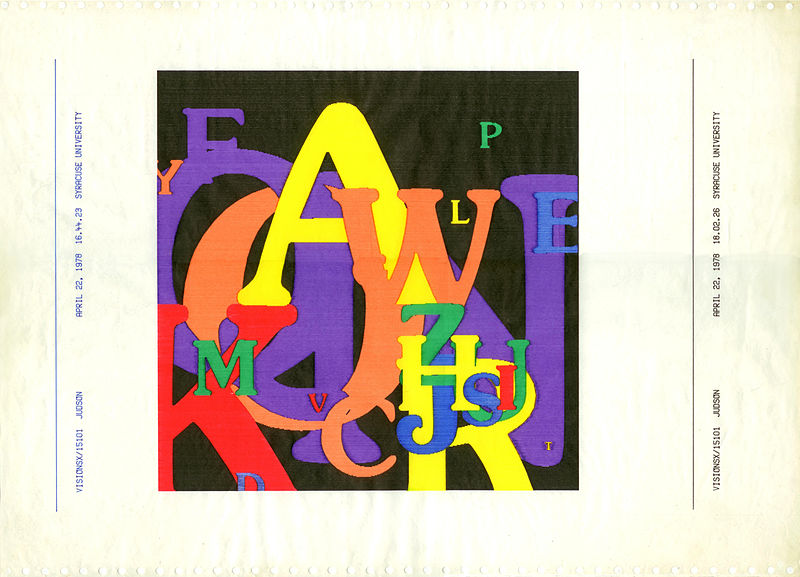 Calcomp plotter computer output with liquid inks
by Judson Rosebush, 1978.
Calcomp plotter computer output with liquid inks
by Judson Rosebush, 1978.